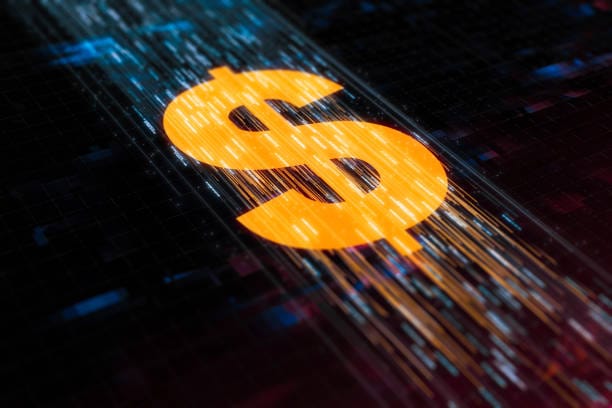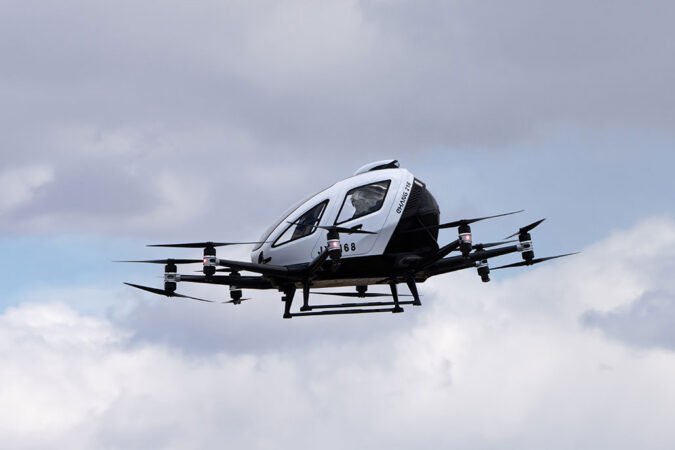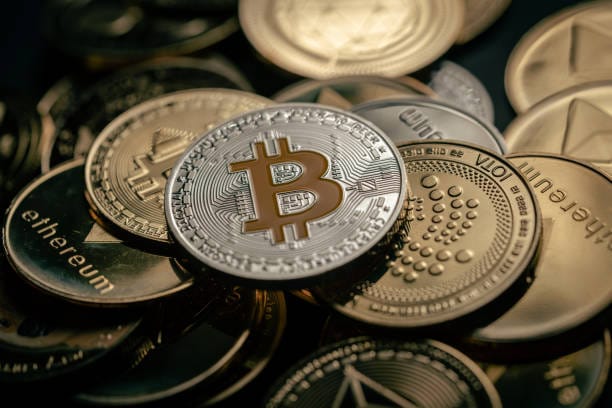It is the year 2025, and the hum of financial transformation is louder than ever. In the quiet click of a phone screen, in the silent handshake of cryptographic keys, in the whirring hum of cash-counting machines in backrooms of small-town shops — the battle between the digital and the physical is unfolding before our eyes. Money, that ancient invention of human trust, is no longer a simple matter of coins, notes, and ledgers. It has become a philosophical battleground, a technological experiment, and a cultural debate.
For centuries, the sound of commerce was the jingle of metal and the rustle of paper. Today, it is the whisper of encrypted transactions slipping through fiber-optic cables and the invisible settlement of trillions of dollars in digital ledgers that never see daylight. The question we face is not whether money is changing — it already has — but which form will rule the future: the tangible certainty of physical cash or the invisible efficiency of digital currency.
The Ancient Pulse of Physical Money
Physical money is more than a tool; it is a ritual. From the first cowrie shells passed between traders in prehistoric markets to the gold coins stamped with the faces of emperors, tangible currency has always carried with it a certain gravitas. To hold a coin or a banknote is to feel the weight of value in one’s palm. It reassures in a way that numbers on a screen cannot.
Even in the 21st century, there are moments when the physical exchange of money feels almost sacred. The grandmother slipping a crisp note into her grandchild’s hand during a holiday. The street vendor’s box of neatly stacked coins. The moment a debt is paid in person with a final counted bill. These are not just financial exchanges — they are human ones.
In 2025, cash is still alive. The U.S. dollar, the euro, the Japanese yen, and countless other currencies continue to circulate in physical form. But they circulate differently than they once did. Central banks in developed nations report declining volumes of cash in daily transactions, while in developing economies, cash still maintains a vital grip, often because it serves those whom the digital system overlooks.
The Rise and Reign of Digital Currency
Digital money is not new. Credit cards, debit systems, and electronic transfers have been around for decades. But what has shifted dramatically in recent years is the nature of that digital money and the architecture behind it.
In 2025, the global financial landscape is shaped by three great pillars of digital currency:
- Central Bank Digital Currencies (CBDCs), state-backed digital versions of national currencies.
- Cryptocurrencies, decentralized and often volatile, with Bitcoin, Ethereum, and newer blockchain ecosystems forming vast, borderless networks.
- Private digital payment systems, from PayPal and Alipay to Apple Pay and Google Wallet, that bridge traditional banking with everyday consumer use.
CBDCs have surged in adoption. China’s digital yuan is fully integrated into its domestic economy, used by hundreds of millions daily. The European Central Bank’s digital euro and the Federal Reserve’s digital dollar are no longer pilot projects but operational systems, with citizens able to hold accounts directly with their national banks.
Cryptocurrencies, while still prone to volatility, have matured in governance and stability. Institutional investors, once skeptical, now hold significant blockchain-based assets. Stablecoins — cryptocurrencies pegged to the value of fiat currencies — have emerged as the bridge between decentralized systems and everyday commerce.
Private payment ecosystems continue to expand, pushing towards seamless integration between messaging, social platforms, and payment rails. In many urban areas, people can go months without touching a single banknote.
The Cultural Divide
The future of money is not just an economic question — it is cultural, psychological, and deeply personal. Digital currency promises convenience, speed, and security. With a phone in your pocket, you can send funds across the world in seconds, buy a coffee without a wallet, or receive your salary without setting foot in a bank.
But for many, something essential feels lost in the process. The tactile, physical act of exchanging money is more than nostalgia. It is about control. With cash, you can hold your wealth in your own hands, immune to outages, glitches, or government freezes. There is no password to forget, no account to be hacked.
In 2025, this divide is stark. Younger generations, raised in a world of smartphones and instant payments, view physical money as a relic, a slow and inconvenient leftover from another age. Older generations — and those wary of surveillance and financial centralization — cling to cash as a symbol of privacy and autonomy.
Privacy in the Age of Traceable Money
Perhaps the most contentious aspect of the shift from physical to digital is privacy. Every digital transaction leaves a footprint — a timestamp, an IP address, a ledger entry. Central Bank Digital Currencies, while promising efficiency, raise legitimate concerns about state surveillance. Could a government one day track every purchase, tax every exchange instantly, or even restrict spending in real time?
For governments, this transparency offers powerful tools to combat money laundering, tax evasion, and financing of illegal activities. But for citizens, it can feel like a trade-off between security and freedom. In a digital-first economy, financial anonymity becomes a luxury — one that physical cash still offers.
The Question of Trust
Money has always been a question of trust — trust that the note you hold will be accepted tomorrow, that the balance in your account is real, that the system will honor your claim to value. In 2025, that trust is being tested in new ways.
For digital currency, trust depends on code, cryptography, and institutional stability. For cryptocurrencies, it hinges on decentralized networks of miners and validators. For CBDCs, it relies on the very governments and central banks that issue them.
Physical money, by contrast, asks for a simpler form of trust: faith in the issuing authority and the continued willingness of others to accept it. You don’t need electricity, the internet, or a functioning banking system to use it. In times of crisis — when trust in digital systems falters — cash often surges back into demand.
Crises as Turning Points
History shows that moments of financial crisis often accelerate change in how money works. The 2008 global financial crisis fueled the birth of Bitcoin. The COVID-19 pandemic in 2020 pushed societies toward contactless payments. In 2023 and 2024, cyberattacks on financial institutions reminded the world that digital infrastructure is both powerful and vulnerable.
By 2025, many nations have responded by building hybrid systems — digital-first, but with robust physical backup. The future may not be about one form of money replacing the other, but about coexistence, with each serving distinct needs.
The Developing World’s Balancing Act
In wealthy nations, the debate about cash versus digital often revolves around preference. In many developing countries, it is about survival. Digital payment systems require internet access, smartphones, and banking infrastructure — all of which remain unevenly distributed.
In parts of Africa, South Asia, and Latin America, mobile money systems like M-Pesa have revolutionized financial inclusion, allowing people without bank accounts to send and receive funds through basic mobile phones. Yet cash still dominates in rural markets where connectivity is poor and trust in digital systems is low.
The future of money in these regions will likely be hybrid for decades, with digital tools expanding opportunity while cash remains the lifeline for millions.
The Emotional Currency of Money
At its heart, the conversation about the future of money is not only about technology, regulation, or economics. It is about the human relationship to value. Digital transactions are efficient but invisible — they disappear into the background of life. Physical money demands attention. When you hand over a bill, you feel the loss. When you receive one, you feel the gain.
Some psychologists argue that physical money encourages more mindful spending, while digital payments make it easier to overspend. The detachment of tapping a card or scanning a code can erode the visceral awareness of parting with value. This is why, even in cashless cities, some people deliberately withdraw and budget with physical currency — not out of necessity, but out of discipline.
The Environmental Equation
There is also an ecological dimension. Producing and transporting physical money consumes resources: cotton and polymer for notes, metal for coins, fuel for transport. Digital transactions avoid these physical costs, but they are not without environmental impact. Data centers powering blockchain networks and global payment systems consume significant electricity. The debate over Bitcoin’s energy use has spurred innovation in greener consensus mechanisms, such as proof-of-stake systems.
In 2025, environmental considerations influence both policy and public opinion. Governments weigh the carbon footprint of printing cash against that of maintaining massive digital infrastructure. Citizens, increasingly conscious of sustainability, factor these issues into their preferences.
The Road Ahead
Looking forward, the trajectory seems clear: digital currency will continue to expand, and physical cash will play a smaller — but still significant — role. In times of peace, stability, and technological progress, digital will dominate. In moments of upheaval, disaster, or distrust, cash will remind us of its enduring value.
Some envision a fully cashless world by the mid-2030s. Others believe cash will linger indefinitely, a stubborn survivor of every technological wave. The truth may lie in a flexible middle ground — a global economy where money takes many forms, and individuals choose the ones that align with their needs, values, and circumstances.
In 2025, the story is still being written. Every time someone taps a phone to pay, every time someone counts out coins for a bus fare, they are participating in the shaping of the future of money. The transformation is not just happening in the halls of central banks or the lines of blockchain code — it is happening in the choices of billions of ordinary people.
Closing Thoughts: The Human Ledger
In the end, money — whether physical or digital — is a human invention. It is a symbol we collectively agree upon, a story we tell each other about value, trust, and exchange. The future will not be decided solely by algorithms or bank policies, but by the deep, often unspoken emotions that guide human behavior.
The glow of a smartphone screen and the weight of a coin in the palm are two sides of the same coin — the coin of human trust. And whether we carry it in a wallet or a digital wallet, it will always be more than numbers. It will be a reflection of who we are, what we value, and how we choose to connect with each other in the vast, ever-changing marketplace of life.






